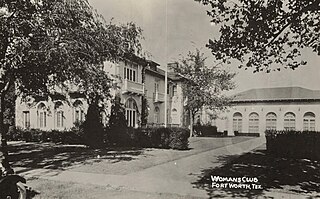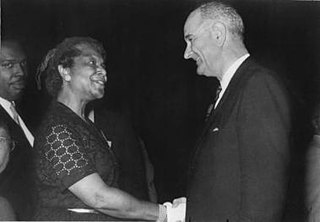
Fort Worth is the fifth-largest city in the U.S. state of Texas and the 13th-largest city in the United States. It is the county seat of Tarrant County, covering nearly 350 square miles (910 km2) into four other counties: Denton, Johnson, Parker, and Wise. According to a 2022 United States census estimate, Fort Worth's population was 958,692. Fort Worth is the second-largest city in the Dallas–Fort Worth–Arlington metropolitan area, which is the fourth most populous metropolitan area in the United States.

Fort Worth Independent School District is a school district based in Fort Worth, Texas, United States. Based on a 2017-18 enrollment of 86,234 students, it is the fifth largest school district in Texas.

R. L. Paschal High School is a secondary school in Fort Worth, Texas, United States. It is part of the Fort Worth Independent School District, and the oldest and largest high school in Fort Worth ISD.
Greenwood Memorial Park at 3100 White Settlement Road in Fort Worth, Texas, has been a perpetual care commercial cemetery since its dedication in 1909. The Mount Olivet Corporation, a non-profit organization was founded by the Bailey family of Fort Worth. The organization is overseen by a board of trustees.

The Fort Worth Star-Telegram is an American daily newspaper serving Fort Worth and Tarrant County, the western half of the North Texas area known as the Metroplex. It is owned by The McClatchy Company.

Edward H. Tarrant was an American politician who served the Republic of Texas and the State of Texas by fighting multiple indigenous nations for two decades. He, along with John Nealy Bryan, John B. Denton, John H. Reagan, and surveyor Warren Angus Ferris, participated in the massacre of Caddo Indians along the Trinity (Arkikosa) River. Once all native people were removed from the area Bryan was able to claim the land, divide it, and sell it, all thanks to the efforts of Gen. Tarrant. This area along the Arkikosa is now known as Dallas, TX. He also served in the Texas House of Representatives during both periods.
The following is a timeline of the history of the city of Arlington, Texas, USA.
The following is a timeline of the history of the city of Fort Worth, Texas, United States.

Reby Cary was an American educator, politician, and historian in the Dallas–Fort Worth metroplex. He was the first black school board member in Fort Worth and served in the Texas House of Representatives from 1979 to 1985. He was the author of numerous books about the history of African Americans in North Texas.
The Baldridge House is a historic three-story mansion in Fort Worth, Texas, U.S. It was built from 1910 to 1913 for Earl Baldridge, a cattleman and rancher who later became a banker, and his wife Florence. It was designed by Sanguinet & Staats. It was purchased by Paun Peters, the president of the Western Production Company, in 2007. It was listed for sale for $8 million in 2017.

Mary Daggett Lake (1880–1955) was an American historian, botanist, and educator instrumental in documenting early North Texas settlers and promoting the appreciation and use of native Texas plants. A Fort Worth, Texas civic leader, she led the garden club movement in Texas, wrote numerous columns for state and local newspapers, and was instrumental in the creation of the Fort Worth Botanic Garden, the oldest botanical garden in Texas.

Oakwood Cemetery is a historic cemetery in the city of Fort Worth, Texas. Deeded to the city in 1879, it is the burial place of local prominent local citizens, pioneers, politicians, and performers.

Hazel Vaughn Leigh was a philanthropist and civic leader in Fort Worth, Texas. As founder and longtime director of the Fort Worth Boys Club, she devoted her life to improving the lives of boys in Fort Worth and Tarrant County. She was the first, and for many years, only female director of a boys' club in the United States. Leigh was inducted into the Texas Women's Hall of Fame in 1993.

Pioneers Rest is the oldest public cemetery in Fort Worth, Texas and one of the oldest in Tarrant County. Its use as a burial ground began in 1849, the same year that the fort was established by the United States Army.

The Woman's Club of Fort Worth is one of the city's oldest membership organizations, formed in 1923 by the members of several existing woman's clubs. The Woman's Club complex comprises eight historic buildings on Fort Worth's Near Southside and was listed on the National Register of Historic Places in 2017. As with many woman's clubs in the United States, the Woman's Club of Fort Worth has its roots in the Progressive Movement, with its original mission of "the cultural and civic advancement of Fort Worth; and the study of literature, history, science, painting, music, and other fine arts."

Anna Shelton was an American businesswoman who founded several women's clubs in Fort Worth, Texas, most notably The Woman's Club of Fort Worth. She was active in Fort Worth's park league, the Fort Worth Library Association, and the Fort Worth Art Association. Shelton became one of Fort Worth's first female real estate developers and homebuilders.

Lenora Rolla was a noted African-American activist, businesswoman, educator, and historian. The granddaughter of former slaves who grew up in poverty, Rolla became a civil rights leader and community activist in the Dallas–Fort Worth metroplex. In 1977, she founded the Tarrant County Black Historical and Genealogical Society, whose history museum is named in honor of Rolla.

Samuel S. Losh (1884–1943) was a vocalist, composer and music educator in Fort Worth, Texas.

Louis J. Wortham was a newspaperman, author, and politician in Texas. He was heavily involved in the early years of the Fort Worth Star-Telegram and served four terms in the Texas House of Representatives from 1909 to 1915, representing Tarrant County. His five volume History of Texas from Wilderness to Commonwealth was published in 1924.
















